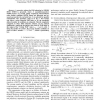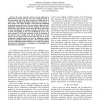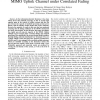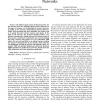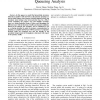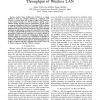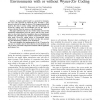ICC
2009
IEEE
13 years 9 months ago
2009
IEEE
A successive scheme for PAR reduction in (MIMO/ SISO) OFDM is presented, where K (parallel/consecutive) OFDM frames are treated jointly. Employing Reed
ICC
2009
IEEE
13 years 9 months ago
2009
IEEE
In sensor networks, privacy can be addressed in different levels of the network stack and at different points of the information flow. This paper presents an application level sche...
ICC
2009
IEEE
13 years 9 months ago
2009
IEEE
Abstract--We present experimental results for the performance of selected voice codecs using the Datagram Congestion Control Protocol (DCCP) with TCP-Friendly Rate Control (TFRC) c...
ICC
2009
IEEE
13 years 9 months ago
2009
IEEE
In the information-theoretic literature, it has been widely shown that multicell processing is able to provide high capacity gains in the context of cellular systems and that the p...
ICC
2009
IEEE
13 years 9 months ago
2009
IEEE
Abstract-- Wireless sensor networks (WSNs) require energyef cient protocols to improve the network lifetime. In this work, we adopt a cross-layer strategy that considers routing an...
ICC
2009
IEEE
13 years 9 months ago
2009
IEEE
Abstract--The highly dynamic nature of infrastructureless adhoc networks poses new challenges during resource discovery. In this paper, we propose a novel algorithm for resource di...
ICC
2009
IEEE
13 years 9 months ago
2009
IEEE
In this paper, we model the hierarchical structures inherent in cognitive radio networks as the priority queueing system in which primary users interact with the highest priority a...
ICC
2009
IEEE
13 years 9 months ago
2009
IEEE
Carrier Sense Multi-Access (CSMA) is a typical method to share the common channel in a Wireless LAN (WLAN). It works fairly well in times of light traffic. However as the number of...
ICC
2009
IEEE
13 years 9 months ago
2009
IEEE
Abstract--Compress-and-Forward is a protocol for transmission over relay networks in which the relay forwards a compressed version of the signal it observes. The compression method...
ICC
2009
IEEE
13 years 9 months ago
2009
IEEE
We revisit the problem of scheduling the sources transmissions in a many-to-one flow to provide reliable communication between n sources and a single destination. The performance o...
